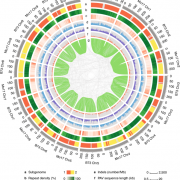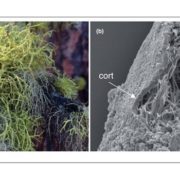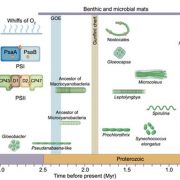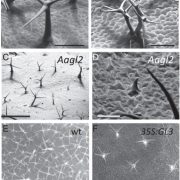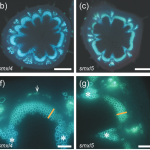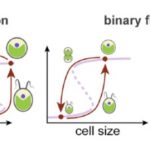Isolation of an archaeon at the prokaryote–eukaryote interface (Nature)
 Sometime around 1.8 to 2 billion years ago, complex eukaryotic cells appeared for the first time, providing the ancestor for plants, animals and fungi. Many lines of evidence have indicated that this event probably involved an ancient archaeon taking up an ancient bacterium, the progenitor of all mitochondria. Genomic studies point to the ancient archaeon as belonging to a group of archaea known as the Asgard lineage (within this lineage subgroups are named for Norse gods, and Asgard is the mythical home of Norse gods; hence Asgard lineage). Starting with deep-sea sediments, and after more than ten years of enrichment culturing, Imachi et al. have now successfully cultured an Asgard archaeon. Its growth requires a syntrophic (cross-feeding) hydrogen-scavenging bacterium in co-culture. Study of this syntrophic co-culture led the authors to propose an “entangle–engulf–endogenize” model for the origin of eukaryotic cells. (Summary by Mary Williams) Nature 10.1038/s41586-019-1916-6
Sometime around 1.8 to 2 billion years ago, complex eukaryotic cells appeared for the first time, providing the ancestor for plants, animals and fungi. Many lines of evidence have indicated that this event probably involved an ancient archaeon taking up an ancient bacterium, the progenitor of all mitochondria. Genomic studies point to the ancient archaeon as belonging to a group of archaea known as the Asgard lineage (within this lineage subgroups are named for Norse gods, and Asgard is the mythical home of Norse gods; hence Asgard lineage). Starting with deep-sea sediments, and after more than ten years of enrichment culturing, Imachi et al. have now successfully cultured an Asgard archaeon. Its growth requires a syntrophic (cross-feeding) hydrogen-scavenging bacterium in co-culture. Study of this syntrophic co-culture led the authors to propose an “entangle–engulf–endogenize” model for the origin of eukaryotic cells. (Summary by Mary Williams) Nature 10.1038/s41586-019-1916-6


